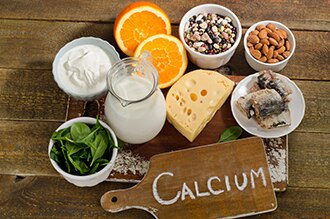Eating, Diet, & Nutrition for Lactose Intolerance
How should I change my diet if I have lactose intolerance?
Talk with your doctor or a dietitian about changing your diet to manage lactose intolerance symptoms while making sure you get enough nutrients. If your child has lactose intolerance, help your child follow the dietary plan recommended by a doctor or dietitian.
To manage your symptoms, you may need to reduce the amount of lactose you eat or drink. Most people with lactose intolerance can have some lactose without getting symptoms.
Foods that contain lactose
You may not need to completely avoid foods and beverages that contain lactose—such as milk or milk products. If you avoid all milk and milk products, you may get less calcium and vitamin D than you need.
People with lactose intolerance can handle different amounts of lactose. Research suggests that many people could have 12 grams of lactose—the amount in about 1 cup of milk—without symptoms or with only mild symptoms.5,6
You may be able to tolerate milk and milk products if you
- drink small amounts of milk at a time and have it with meals
- add milk and milk products to your diet a little at a time and see how you feel
- try eating yogurt and hard cheeses, like cheddar or Swiss, which are lower in lactose than other milk products
- use lactase products to help digest the lactose in milk and milk products

Lactose-free and lactose-reduced milk and milk products
Using lactose-free and lactose-reduced milk and milk products may help you lower the amount of lactose in your diet. These products are available in many grocery stores and are just as healthy for you as regular milk and milk products.
Calcium and Vitamin D
If you are lactose intolerant, make sure you get enough calcium and vitamin D each day. Milk and milk products are the most common sources of calcium.
Many foods that do not contain lactose are also sources of calcium. Examples include:
- fish with soft bones, such as canned salmon or sardines
- broccoli and leafy green vegetables
- oranges
- almonds, Brazil nuts, and dried beans
- tofu
- products with labels that show they have added calcium, such as some cereals, fruit juices, and soy milk

Vitamin D helps your body absorb and use calcium. Be sure to eat foods that contain vitamin D, such as eggs and certain kinds of fish, such as salmon. Some ready-to-eat cereals and orange juice have added vitamin D. Some milk and milk products also have added vitamin D. If you can drink small amounts of milk or milk products without symptoms, choose products that have added vitamin D. Also, being outside in the sunlight helps your body make vitamin D.
Talk with your doctor or dietitian about whether you are getting the nutrients you need. For safety reasons, also talk with your doctor before using dietary supplements or any other complementary or alternative medicines or practices. Also talk with your doctor about sun exposure and sun safety.
What foods and drinks contain lactose?
Lactose is in all milk and milk products and may be found in other foods and drinks.
Milk and milk products may be added to boxed, canned, frozen, packaged, and prepared foods. If you have symptoms after consuming a small amount of lactose, you should be aware of the many products that may contain lactose, such as
- bread and other baked goods, such as pancakes, biscuits, cookies, and cakes
- processed foods, including breakfast cereals, instant potatoes, soups, margarine, salad dressings, and flavored chips and other snack foods
- processed meats, such as bacon, sausage, hot dogs, and lunch meats
- milk-based meal replacement liquids and powders, smoothies, and protein powders and bars
- nondairy liquid and powdered coffee creamers, and nondairy whipped toppings
You can check the ingredient list on packaged foods to see if the product contains lactose. The following words mean that the product contains lactose:
- milk
- lactose
- whey
- curds
- milk by-products
- dry milk solids
- nonfat dry milk powder
A small amount of lactose may be found in some prescription and over-the-counter medicines. Talk with your doctor about the amount of lactose in medicines you take, especially if you typically cannot tolerate even small amounts of lactose.
References
This content is provided as a service of the National Institute of Diabetes and Digestive and Kidney Diseases
(NIDDK), part of the National Institutes of Health. NIDDK translates and disseminates research findings to increase knowledge and understanding about health and disease among patients, health professionals, and the public. Content produced by NIDDK is carefully reviewed by NIDDK scientists and other experts.
The NIDDK would like to thank:
Rachel Fisher, M.S., M.P.H., R.D., NIDDK Office of Nutrition Research

